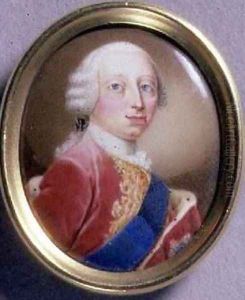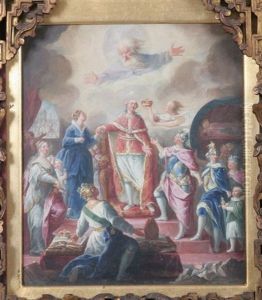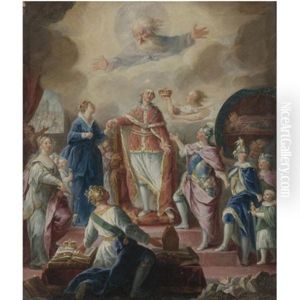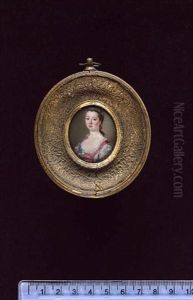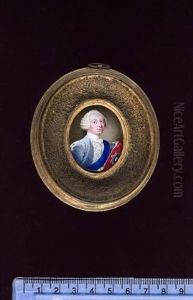Gaetano Manini Paintings
Gaetano Manini was an Italian artist and architect, born in 1778 and who died in 1861. His life and career were emblematic of the transitional period from the late 18th century to the mid-19th century, a time when Europe, and Italy in particular, was undergoing significant political, social, and cultural transformations. Manini's work, therefore, reflects the stylistic shifts from the neoclassical to the romantic and the burgeoning interest in the historical and the picturesque, which would come to characterize much of 19th-century European art and architecture.
Although not as widely recognized as some of his contemporaries, Manini's contributions to the fields of art and architecture were noteworthy. His early training was rooted in the neoclassical tradition, which emphasized clarity, order, and balance, drawing inspiration from the art and architecture of ancient Greece and Rome. As his career progressed, however, Manini began to incorporate elements of romanticism into his work, demonstrating a flexibility and adaptability to the changing tastes and philosophies of his time.
Manini was active during a period of great change in Italy, including the Napoleonic Wars and the subsequent unification of Italy. These events shaped the cultural landscape in which he worked and influenced his artistic decisions. He was involved in various projects, ranging from the design of public buildings and monuments to the restoration of historic structures, showing a keen interest in the preservation of Italy's architectural heritage.
Despite his contributions, detailed records of Manini's projects and works are scarce, and much of his legacy is pieced together from archival research and the study of buildings attributed to him. His influence, however, can be seen in the way he bridged the gap between the neoclassical and romantic movements, contributing to the development of a uniquely Italian approach to 19th-century art and architecture.
As a figure in the world of art and architecture, Gaetano Manini reminds us of the importance of transitional figures who embody the evolution of styles and ideas. His career offers insight into the complexities of Italian cultural identity during a period of significant change and the role of artists and architects in both reflecting and shaping the world around them.
